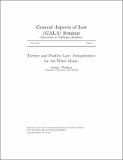| dc.coverage.spatial |
Estados Unidos |
| dc.date.accessioned |
2016-01-07T15:29:16Z |
| dc.date.available |
2016-01-07T15:29:16Z |
| dc.identifier.uri |
http://desa1.cejamericas.org:8080/handle/2015/3642 |
| dc.description.abstract |
Revelations of ill-treatment of prisoners by American forces at Abu Ghraib and the publication of memoranda showing that Bush administration lawyershave been seeking to narrow the application of the Convention against Torture and other similar provisions – these developments make it necessary for us tothink afresh about the character and significance of the various legal prohibitions on torture. This paper argues that the prohibition on torture is not just onerule among others, but a legal archetype – a rule which is emblematic of our larger commitment to break the link between law and brutality. Characterizing the prohibition as a legal archetype affects how we think about the implications of authorizing torture (or interrogation methods that come close to torture); itaffects how we think about issues of definition in regard to torture; and it aspects how we think about the fragility and contingency of the provisions of positivelaw that stand between us and barbarism. |
| dc.title |
Torture and Positive Law: Jurisprudence for the White House |
| dc.ceja.source |
Fuente: <a href="http://repositories.cdlib.org/cilas/papers/22" target="_blank">eScholarship Repository, University of California.</a> |

